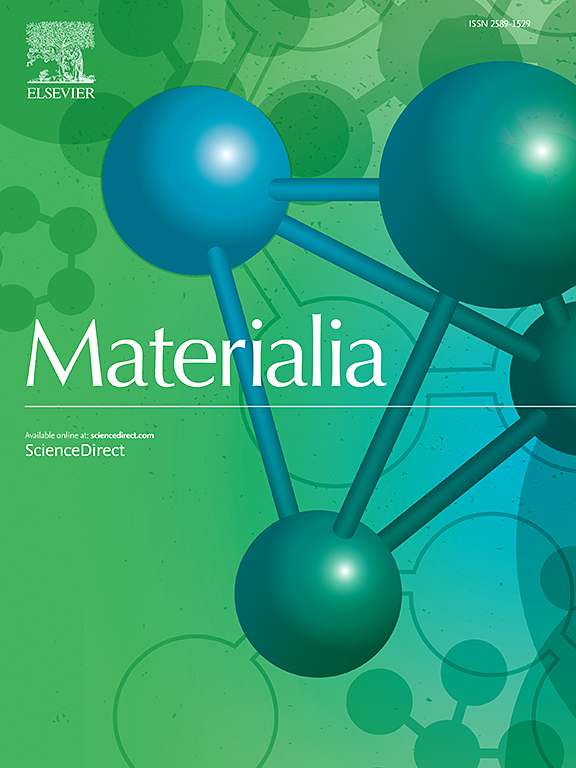疏松皮沙砂岩烧结制备陶瓷砂及矿物演化响应机制
IF 2.9
Q2 MATERIALS SCIENCE, MULTIDISCIPLINARY
引用次数: 0
摘要
为提高松散皮沙砂岩资源的有效利用,介绍了一种从皮沙砂岩中制备陶瓷砂的创新方法。通过综合实验分析,确定了最佳烧结温度,并利用FactSage热力学模拟软件结合热分析方法对烧结过程中矿物的演化过程进行了深入研究。分析了高温液相形成对孔隙结构的影响,量化了最佳烧结温度下的准确液相含量。结果表明,最佳烧结温度为1125℃,陶瓷砂抗压强度为5.29 MPa,容重为964.3 kg/m3,吸水率为2.99%,符合1000级轻质细骨料标准。长石、石英、硅灰石和透辉石等低共晶液相的形成显著降低了孔隙度,增强了陶瓷结构的致密性。在1125℃时的最佳液相含量精确计算为85.48%。该研究为制定黄河流域主要沙源——皮沙砂岩资源可持续开发新策略提供了坚实的理论依据。本文章由计算机程序翻译,如有差异,请以英文原文为准。

Sintering of loose Pisha sandstone to prepare ceramic sand and mineral evolution response mechanism
To enhance the effective utilization of loose Pisha sandstone resources, this study introduces an innovative method for preparing ceramic sand from Pisha sandstone. Through comprehensive experimental analysis, the optimal sintering temperature was determined, and the mineral evolution processes during sintering were thoroughly investigated using FactSage thermodynamic simulation software combined with thermal analysis methods. Moreover, the influence of high-temperature liquid phase formation on the pore structure was analyzed, and the exact liquid phase content at the optimal sintering temperature was quantified. Results showed the optimal sintering temperature to be 1125 °C, yielding ceramic sand with a compressive strength of 5.29 MPa, bulk density of 964.3 kg/m3, and water absorption rate of 2.99 %, meeting the standards for 1000-grade lightweight fine aggregates. The formation of low-eutectic liquid phases involving feldspar, quartz, wollastonite, and diopside significantly reduced porosity and enhanced densification of the ceramic structure. The optimal liquid phase content at 1125 °C was precisely calculated as 85.48 %. This research provides a solid theoretical basis for developing new strategies to sustainably exploit Pisha sandstone resources, a major sediment source in the Yellow River basin.
求助全文
通过发布文献求助,成功后即可免费获取论文全文。
去求助
来源期刊

Materialia
MATERIALS SCIENCE, MULTIDISCIPLINARY-
CiteScore
6.40
自引率
2.90%
发文量
345
审稿时长
36 days
期刊介绍:
Materialia is a multidisciplinary journal of materials science and engineering that publishes original peer-reviewed research articles. Articles in Materialia advance the understanding of the relationship between processing, structure, property, and function of materials.
Materialia publishes full-length research articles, review articles, and letters (short communications). In addition to receiving direct submissions, Materialia also accepts transfers from Acta Materialia, Inc. partner journals. Materialia offers authors the choice to publish on an open access model (with author fee), or on a subscription model (with no author fee).
 求助内容:
求助内容: 应助结果提醒方式:
应助结果提醒方式:


